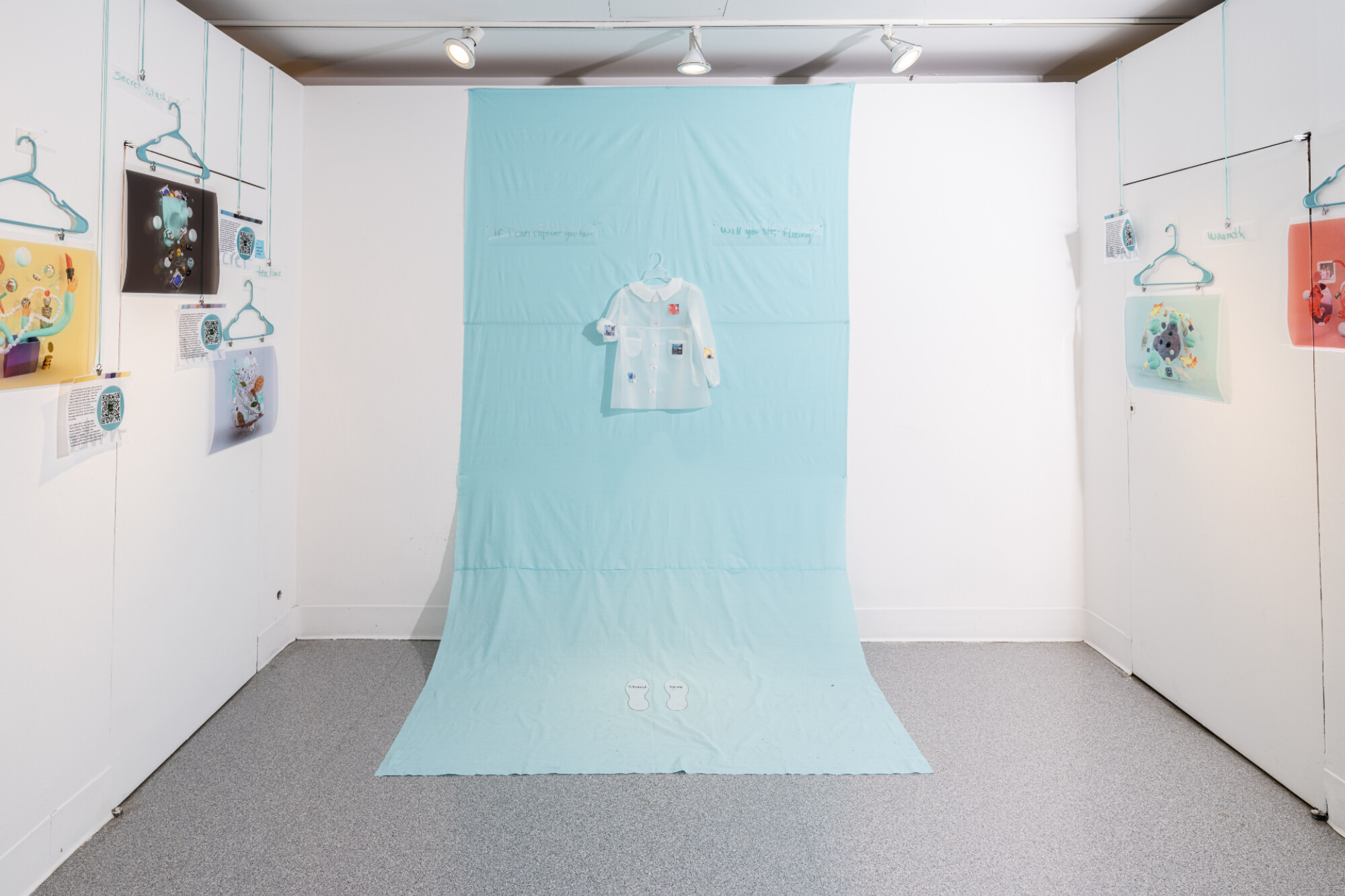
Image: Andriy Onufriyenko via Getty Images

For the first time since design became an undergraduate major, Penn seniors created an in-person exhibition to showcase their final projects, interpreting this year’s theme “in search of” in a variety of media.
Design became a major in the fall of 2019, in conjunction with a restructuring of an enhanced fine arts major. Both majors are offered through a collaboration between Penn’s Stuart Weitzman School of Design and College of Arts and Sciences, with most of the 70-plus courses taught by faculty from the Weitzman School.
The major, which requires 16 credits, “explores the expansive nature of contemporary design and its relationship to the humanities, the sciences, and emerging technologies,” says Matt Neff, director of the undergraduate program in fine arts and design. There is “a lot of excitement from students across campus” since the major’s launch, he says, and the department has been adding new courses and sections of design studios and seminars to meet the growing demand.
The collaborative exhibition showcased the “culminating project” for 15 seniors who are design majors, said Ani Liu, professor of practice, who co-taught the senior design seminar with Jacob Rivkin. “They’re all addressing different themes, of culture, identity, and the relationship between technology and society,” says Liu.
The words the students used to define their projects, filling in the blank after the phrase “in search of …,” included adaptability, anxiety, balance, culture, coherence, escape, identity, interaction, legacy, memory, metamorphosis, myself, stories, sustainability, and understanding.
“It’s been amazing to see the students grow and develop as designers and artists throughout their time at Penn, especially this year,” Rivkin says. “Through the process of iteration and prototyping their thesis projects with intention, every student made creative and conceptual leaps in their own practice.”
The projects incorporate highlights of the major’s coursework, including website, publication, clothing, graphic, architectural, and spatial design, as well as illustration, animation, photography, 3D modeling, video, and augmented and virtual reality. The students also designed and created their exhibition spaces.
“I was impressed with the range of projects, both in content and form, exploring identity, accessibility, familial histories and memory, mental health, change and adaptability, and speculative design,” says Neff. “Many of the students worked with emerging technologies and fabrication techniques to inform their research and projects. It was exciting to see many material explorations, interactive projects, and disseminatable publications.”
The showcase was “an experiment in and of itself” with diverse work in the different forms of media, Liu said, noting intersections with computer science, engineering, and art. “I think it’s important for Penn students to be able to explore outside the boundaries of one major,” Liu says, “and this is something that has lends itself to that type of thinking.”
The exhibition, says Kate Lawrence, associate director of undergraduate fine arts and design, “highlighted an emergent spirit of collaboration and community that was essential for the success of the show.”
Louisa Shepard

Image: Andriy Onufriyenko via Getty Images

Four women street vendors sell shoes and footwear on a Delhi street.
(Image: Kannagi Khanna)

nocred

nocred